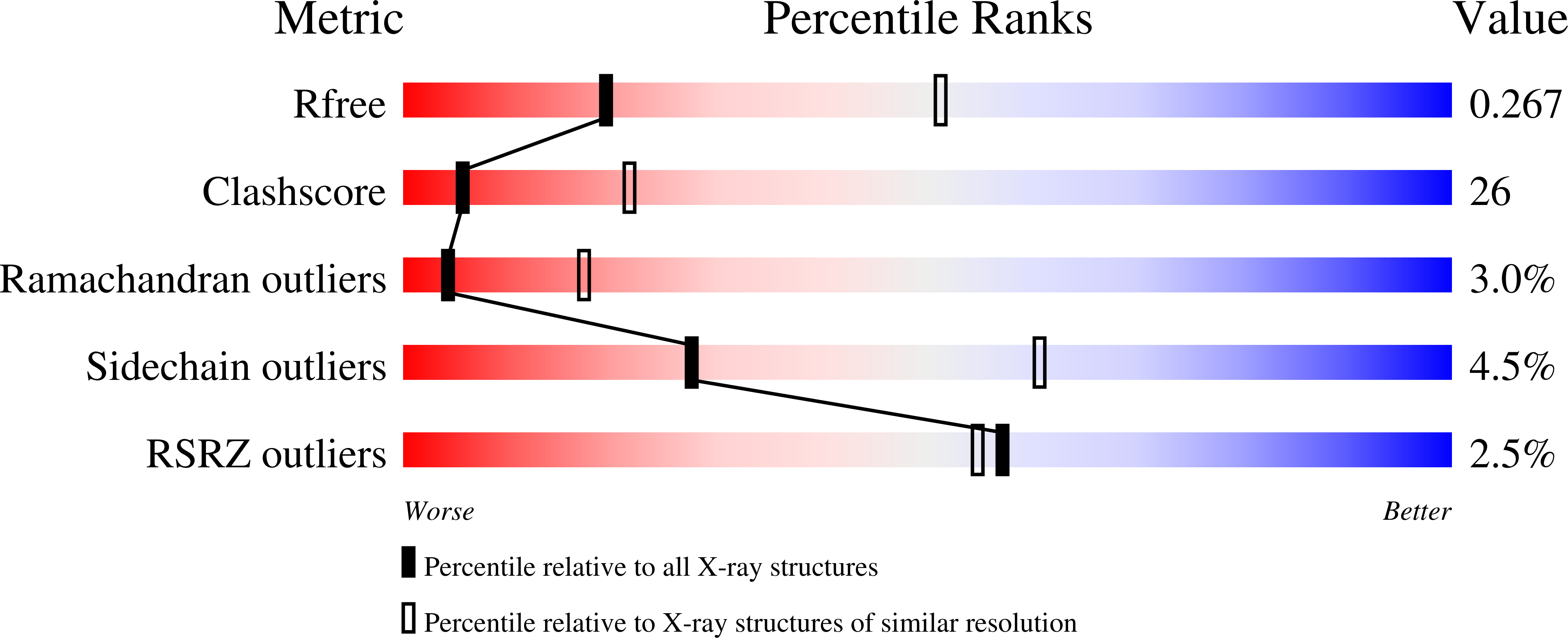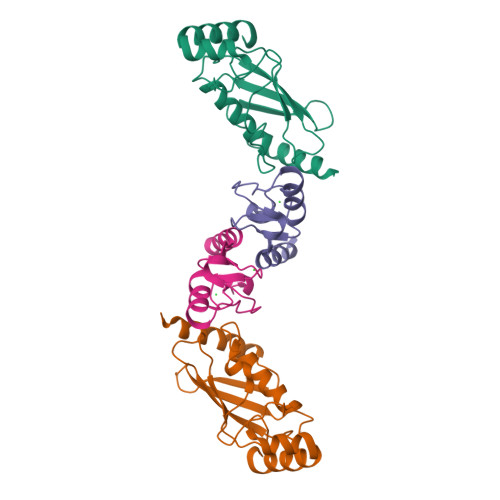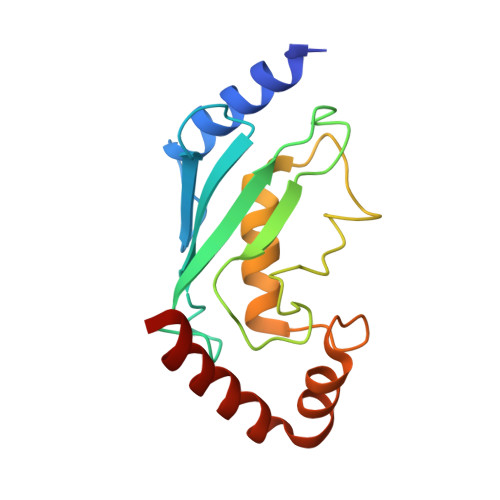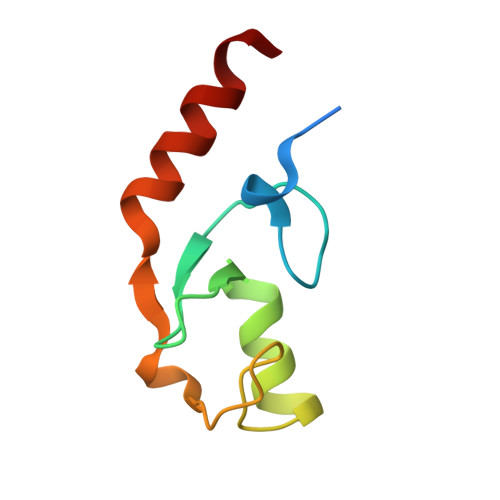Interactions between the quality control ubiquitin ligase CHIP and ubiquitin conjugating enzymes.
Xu, Z., Kohli, E., Devlin, K.I., Bold, M., Nix, J.C., Misra, S.(2008) BMC Struct Biol 8: 26-26
- PubMed: 18485199
- DOI: https://doi.org/10.1186/1472-6807-8-26
- Primary Citation of Related Structures:
2OXQ - PubMed Abstract:
Ubiquitin (E3) ligases interact with specific ubiquitin conjugating (E2) enzymes to ubiquitinate particular substrate proteins. As the combination of E2 and E3 dictates the type and biological consequence of ubiquitination, it is important to understand the basis of specificity in E2:E3 interactions. The E3 ligase CHIP interacts with Hsp70 and Hsp90 and ubiquitinates client proteins that are chaperoned by these heat shock proteins. CHIP interacts with two types of E2 enzymes, UbcH5 and Ubc13-Uev1a. It is unclear, however, why CHIP binds these E2 enzymes rather than others, and whether CHIP interacts preferentially with UbcH5 or Ubc13-Uev1a, which form different types of polyubiquitin chains. The 2.9 A crystal structure of the CHIP U-box domain complexed with UbcH5a shows that CHIP binds to UbcH5 and Ubc13 through similar specificity determinants, including a key S-P-A motif on the E2 enzymes. The determinants make different relative contributions to the overall interactions between CHIP and the two E2 enzymes. CHIP undergoes auto-ubiquitination by UbcH5 but not by Ubc13-Uev1a. Instead, CHIP drives the formation of unanchored polyubiquitin by Ubc13-Uev1a. CHIP also interacts productively with the class III E2 enzyme Ube2e2, in which the UbcH5- and Ubc13-binding specificity determinants are highly conserved. The CHIP:UbcH5a structure emphasizes the importance of specificity determinants located on the long loops and central helix of the CHIP U-box, and on the N-terminal helix and loops L4 and L7 of its cognate E2 enzymes. The S-P-A motif and other specificity determinants define the set of cognate E2 enzymes for CHIP, which likely includes several Class III E2 enzymes. CHIP's interactions with UbcH5, Ube2e2 and Ubc13-Uev1a are consistent with the notion that Ubc13-Uev1a may work sequentially with other E2 enzymes to carry out K63-linked polyubiquitination of CHIP substrates.
Organizational Affiliation:
Department of Molecular Cardiology, Lerner Research Institute, The Cleveland Clinic, Cleveland, Ohio, USA. xuz1@ccf.org


















